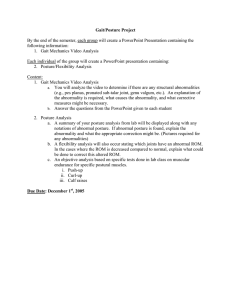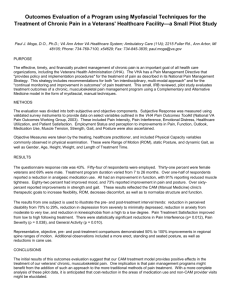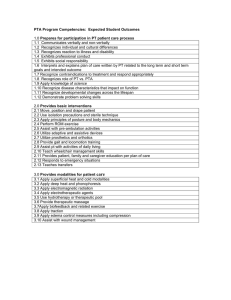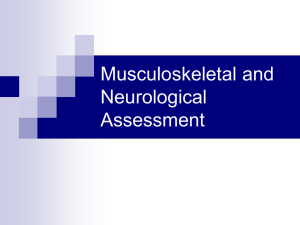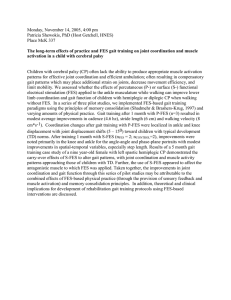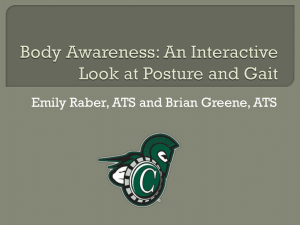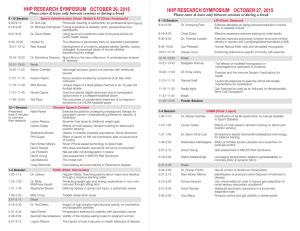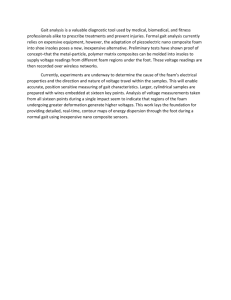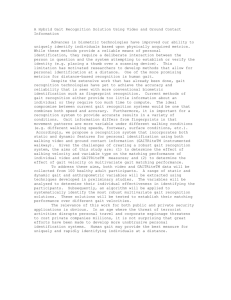Instructions-for-Assessment-Oct-2014 - Osteo
advertisement
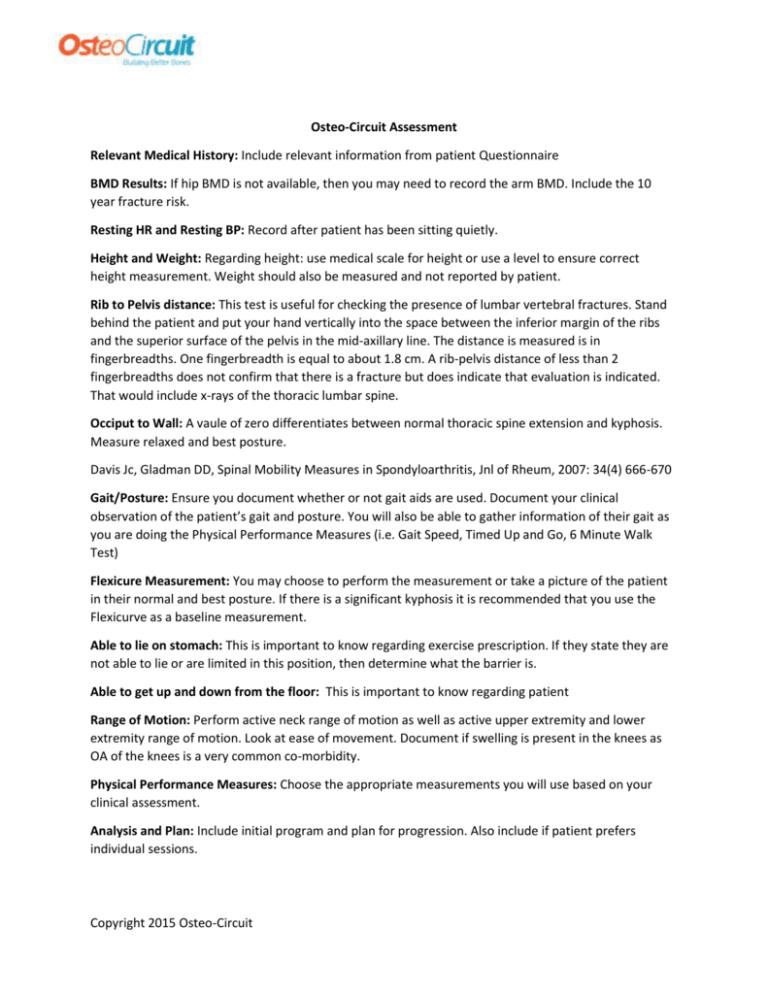
Osteo-Circuit Assessment Relevant Medical History: Include relevant information from patient Questionnaire BMD Results: If hip BMD is not available, then you may need to record the arm BMD. Include the 10 year fracture risk. Resting HR and Resting BP: Record after patient has been sitting quietly. Height and Weight: Regarding height: use medical scale for height or use a level to ensure correct height measurement. Weight should also be measured and not reported by patient. Rib to Pelvis distance: This test is useful for checking the presence of lumbar vertebral fractures. Stand behind the patient and put your hand vertically into the space between the inferior margin of the ribs and the superior surface of the pelvis in the mid-axillary line. The distance is measured is in fingerbreadths. One fingerbreadth is equal to about 1.8 cm. A rib-pelvis distance of less than 2 fingerbreadths does not confirm that there is a fracture but does indicate that evaluation is indicated. That would include x-rays of the thoracic lumbar spine. Occiput to Wall: A vaule of zero differentiates between normal thoracic spine extension and kyphosis. Measure relaxed and best posture. Davis Jc, Gladman DD, Spinal Mobility Measures in Spondyloarthritis, Jnl of Rheum, 2007: 34(4) 666-670 Gait/Posture: Ensure you document whether or not gait aids are used. Document your clinical observation of the patient’s gait and posture. You will also be able to gather information of their gait as you are doing the Physical Performance Measures (i.e. Gait Speed, Timed Up and Go, 6 Minute Walk Test) Flexicure Measurement: You may choose to perform the measurement or take a picture of the patient in their normal and best posture. If there is a significant kyphosis it is recommended that you use the Flexicurve as a baseline measurement. Able to lie on stomach: This is important to know regarding exercise prescription. If they state they are not able to lie or are limited in this position, then determine what the barrier is. Able to get up and down from the floor: This is important to know regarding patient Range of Motion: Perform active neck range of motion as well as active upper extremity and lower extremity range of motion. Look at ease of movement. Document if swelling is present in the knees as OA of the knees is a very common co-morbidity. Physical Performance Measures: Choose the appropriate measurements you will use based on your clinical assessment. Analysis and Plan: Include initial program and plan for progression. Also include if patient prefers individual sessions. Copyright 2015 Osteo-Circuit
